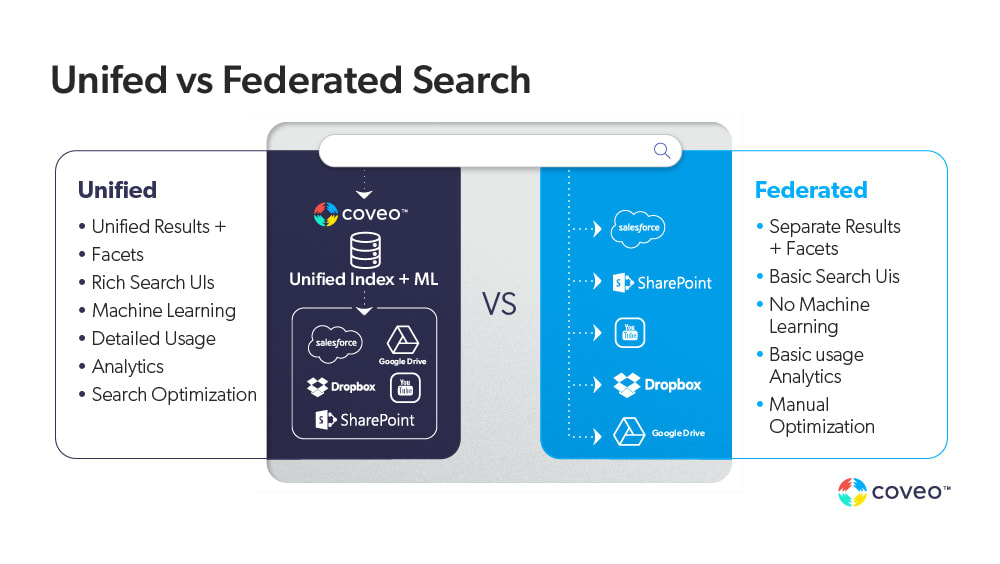AI is no longer a moonshot — it’s an enterprise operating imperative. The C-suite mandate is clear: reduce inefficiencies, increase revenue impact, and deliver experiences that are not just digital, but intelligent and anticipatory.
And yet, despite accelerating investments in generative tools and agentic workflows, most organizations are struggling to realize meaningful returns. Why? Because delivering on AI’s promise isn’t just about the models — it’s about the infrastructure that enables them.
Gartner’s recent report, Rethink Enterprise Search to Power AI Assistants and Agents, highlights a core reason why AI underdelivers in the enterprise: information is still hard to find. Even as nearly half of employees report using tools like Microsoft 365 Copilot and Google Gemini, a third say they regularly struggle to surface relevant data.
This isn’t a model problem. It’s a knowledge access problem. AI can’t leverage what it can’t retrieve.
And that’s why enterprise search (long relegated to the status of back-end utility) is critical for success. When unified, contextual, and continuously learning, enterprise search doesn’t just retrieve information — it augments applied AI to achieve its full potential and deliver on expectations.
It’s not just about finding information. It’s about activating it: intelligently, everywhere your customers and employees engage.
Siloed Enterprise Decisioning Limits AI Innovation
Technology decisions in the enterprise have long followed the arc of innovation. From ERP systems to CMSs, then CRMs and DXPs — each wave arrived with a promise: greater operational efficiency, improved productivity, stronger customer and employee experiences. Cloud migrations, headless architecture, composable stacks — these too aimed to solve a discrete pain point or unlock new levels of agility.
But over time, this pattern of point-solution purchasing has created something else: an enterprise environment marked by fragmentation. A patchwork of tools, each optimized for a specific function, but rarely designed to interoperate.

And in this complexity lies a paradox of progress. Though digital infrastructure has grown more powerful, decision-making has become more difficult. Because as each new platform entered the stack, so did more data — structured, unstructured, and siloed.
The consequence? Fragmented institutional knowledge. Lost context. Decisions made with partial information — if they’re made at all.
Unfortunately, AI investments are often made with the same logic. Each model is chosen and implemented for a specific task, without thought as to what might be missing. Each is flying blind, limited to the narrow slices of knowledge they can access.
Because AI only knows what it knows. And right now, most don’t know nearly enough.
Search Is Ubiquitous Yet Forgotten
Search is second nature in our personal lives. We use it constantly — navigating apps, retrieving emails, answering questions, and making decisions in seconds. It’s seamless, intuitive, and tailored.
But in the enterprise? It’s disjointed. Employees hunt across tools like SharePoint, Salesforce, Slack, and ServiceNow — each with its own siloed search bar, none offering a complete picture. The result is wasted time, slower decisions, and mounting frustration.
Now imagine a different reality: an employee poses a question, and instead of a list of links, they receive a contextual response — an actual answer, complete with next steps. No guesswork. No toggling.
That’s not a vision — it’s the trajectory. Gartner predicts that by 2028, 80% of employee decisions will be guided by proactive synthesis, not reactive retrieval. And yet, even with widespread AI adoption, most employees still struggle to find the information they need to do their jobs.
The issue isn’t AI — it’s knowledge access. Like people, AI can’t act on what it doesn’t know. It needs connected, intelligible data. This is where search — when treated as a strategic layer — comes in.
Unified Search Relevance Is Realistic — And Required
From stone tablets to cloud databases, humans have always created systems to make knowledge easier to access and apply. Enterprise search is the latest evolution in that lineage — and it’s quickly becoming foundational in a world where relevance, speed, and accuracy are non-negotiable.
Search itself has evolved. From keyword-matching to semantic understanding through vectorization, modern search now comes closer than ever to approximating the experience of asking a very smart colleague or expert a question. But with this progress, expectations have risen. Leaders expect search to not just retrieve, but to deliver precision, context, and immediacy. And too often, those expectations go unmet — because most enterprise search functionalities remain fragmented, incomplete, and under-optimized.
Unified search changes that.
Unlike basic federated approaches that simply aggregate results from disparate systems, unified search creates a singular index — one that connects to all enterprise platforms without requiring re-platforming or data migration. That index acts as a centralized brain: surfacing all relevant information, intelligently and securely, across every query, channel, and user.

It also solves one of the most persistent challenges in enterprise data environments: consistent ranking. When all content is indexed in the same place, every source is evaluated using the same logic — ensuring equitable, explainable, and repeatable results. When combined with AI, this creates a dynamic, adaptive experience: from smart query suggestions to personalized recommendations and next-best actions.
Crucially, unified search complements generative AI and AI agents by streamlining access to the very knowledge these tools need to reason, respond, and act. Where traditional search falters — due to siloed content, inconsistent taxonomies, or overwhelming volume — unified search performs like a digital librarian, aware of every file, dataset, and asset across the organization.
And this isn’t theory.
Today’s enterprise-ready platforms — like Coveo — combine native connectors, relevance tuning, and behavioral analytics to bridge across repositories while respecting ownership and governance. Structured and unstructured data alike become accessible through a single lens, standardized in the index while preserved in place.
Gartner suggests a fully unified index across the enterprise may be difficult to achieve. In reality, leading organizations are already doing it. Companies like Dell, F5 Networks, Zoom, SAP Concur, and more are seeing measurable impact — streamlining experiences across service, workplace, and commerce by unifying content and context. They’re not just surfacing answers. They’re transforming how knowledge flows through their business.
Unified search isn’t aspirational. It’s operational — and it’s available today.
For enterprises serious about enabling AI to deliver at scale, this is the infrastructure that quietly powers transformation.
An AI Search Platform to Augment Platforms
In a world where generative AI and digital assistants promise transformation, organizations are beginning to realize that intelligence without knowledge is noise. Automation without visibility is risk. To scale AI meaningfully, enterprises need a foundation that connects fragmented systems, makes sense of sprawling data, and delivers insight where it matters most.
Coveo exists to be that foundation. Since 2005, we’ve partnered with over 700 enterprise organizations to solve some of today’s most complex data and information challenges. What began with unified search, analytics, and secure access has evolved into a comprehensive AI-search and relevance platform — purpose-built for the enterprise.

We power connectivity across hundreds of content sources, enforce enterprise-grade security and compliance, and deliver a suite of advanced machine learning capabilities spanning use cases like digital workplace, service, commerce, and website experiences. Our platform offers powerful, built-in analytics reporting like the Knowledge Hub for visibility, security, and control over AI-generated content.
We’ve consistently been ahead of the curve — moving to the cloud early, operationalizing AI long before it became table stakes, and shaping the future of search long before it became the engine behind AI assistants and agents. This long-standing innovation has earned Coveo consistent recognition from analysts: seven times a leader in Insight Engines, six times in Cognitive Search, three times in Enterprise Search, and twice in Knowledge Discovery, according to Gartner, Forrester, IDC, and Info-Tech Software Reviews.
That’s why today, more than ever, your vendor strategy matters. In a world where experience is inseparable from intelligence, choosing best-of-breed isn’t just a procurement decision — it’s a competitive one.
Interested in learning what Coveo can do for your enterprise? Book a call today.











